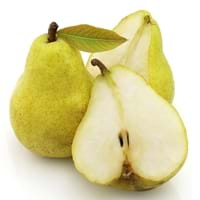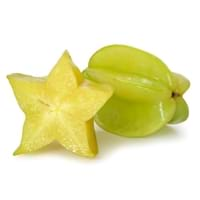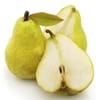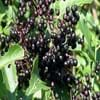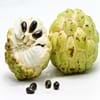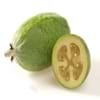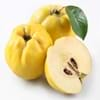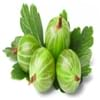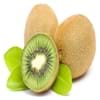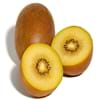Health Benefits
Arthritis prevention, Cancer prevention, Gout treatment, Heart care
Cancer prevention, Heat stroke treatment
General Benefits
Anti-inflammatory properties, Boosts immune system, Controls blood pressure, Controls blood sugar levels, Cures fever, Digestive aid, Sore throat treatment
Anti oxidant properties, Anti-inflammatory properties, Digestive aid, Maintains healthy cholesterol level, Treatment of sore eyes
Skin Benefits
Reduces wrinkles, Treatment of acne
Anti-aging benefits, Heals sunburn, Skin rejuvenation
Hair Benefits
Promotes longer and healthier hair, Shiny hair
Promotes longer and healthier hair, Protects hair
Allergy Symptoms
Anaphylaxis, Digestive Problems, Itching, Skin Rashes, Swelling
NA
Side Effects
Allergic reaction
Nausea, Vomiting
Best Time to Eat
As a snack in the late afternoon, Don't consume at night and before bed, Eat the fresh ones, avoid mixing with any other foods, don't eat after meal., Morning time (before lunch)
As a snack in the late afternoon, Eat the fresh ones, avoid mixing with any other foods, don't eat after meal., Strictly avoid empty stomach
Vitamin B5 (Pantothenic Acid)
Vitamin C (Ascorbic Acid)
Vitamin K (Phyllochinone)
Phytosterol
Not Available
Calories in Fresh Fruit with Peel
Calories in Fresh Fruit without Peel
Not Available
Not Available
Calories in Frozen Form
Not Available
Not Available
Calories in Dried Form
Not Available
Calories in Canned Form
Not Available
Not Available
Calories in Jam
Not Available
Calories in Pie
Not Available
Type
Tree fruit
Tree fruit
Season
Autumn, Summer, Winter
Autumn, Spring, Summer
Varieties
Green Anjou, Red Anjou, Bartlett, Red Bartlett, Bosc, Comice, Concorde, Forelle, Seckel and Starkrimson
King, Bell, Sri Kembangan, Arkin and Fwang Tung
Color
Yellow
Golden yellow, Green
Inside Color
White
Yellowish Green
Shape
Pear
Oval and Star(Cross section)
Taste
Crunchy, Sweet
Crisp, Juicy, Sweet
Origin
China, Japan
Sri Lanka
Grows on
Trees
Not Available
Soil Type
Clayey, Loamy, Sandy
Loam, Well-drained
Climatic Conditions
Cold, Hot, Without frosts
Moist, Warm to hot climate
Facts about
- The first pear tree was planted in North America in 1620.
- The Chinese considered the pear fruit to be a symbol of immortality.
- This fruit was used as a natural remedy against nausea in ancient Greece.
- When carambola is cut horizontally, it forms a star.
- It is believed that carambola helps to cure hangover.
- Entire carambola is edible, including its skin.
- 2 varieties of carambola are cultivated: tart & sweet.
Top Producer
China
Taiwan
Other Countries
Argentina, Belgium, India, Italy, Japan, South Africa, Spain, Turkey, United States of America
Australia, Guyana, India, Israel, Malaysia, Philippines, United States of America
Top Importer
Europe
Europe
Top Exporter
China
Malaysia
Botanical Name
Pyrus communis
Averrhoa carambola
Synonym
Not Available
Not Available
Subkingdom
Tracheobionta
Tracheobionta
Division
Magnoliophyta
Magnoliophyta
Class
Magnoliopsida
Magnoliopsida
Family
Rosaceae
Oxalidaceae
Species
P. communis
A. carambola
Generic Group
Rose
Not Available
Difference Between Pear and Carambola
We might think that Pear and Carambola are similar with respect to nutritional value and health benefits. But the nutrient content of both fruits is different. Pear and Carambola Facts such as their taste, shape, color, and size are also distinct. The difference between Pear and Carambola is explained here.
The amount of calories in 100 gm of fresh Pear and Carambola with peel is 57.00 kcal and 31.00 kcal and the amount of calories without peel is Not Available and Not Available respectively. Thus, Pear and Carambola belong to Low Calorie Fruits and Low Calorie Fruits category.These fruits might or might not differ with respect to their scientific classification. The order of Pear and Carambola is Rosales and Oxalidales respectively. Pear belongs to Rosaceae family and Carambola belongs to Oxalidaceae family. Pear belongs to Pyrus genus of P. communis species and Carambola belongs to Averrhoa genus of A. carambola species. Beings plants, both fruits belong to Plantae Kingdom.
